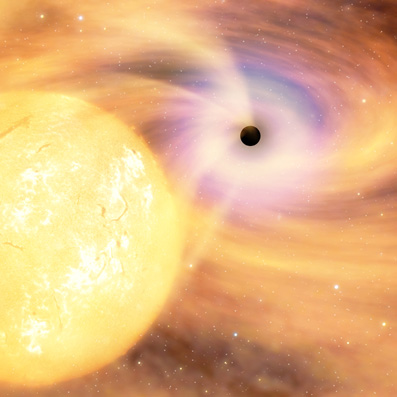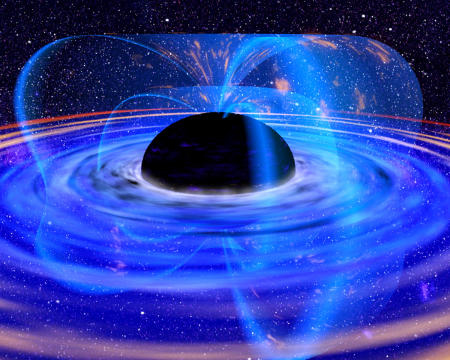Active Galaxy Nuclei
Active Galaxy Nuclei
| Artist's Concepts: to left, a massive black hole strips the outer layers from a passing stars and pulls them into its maw; to right, a closer look of a black hole with accretion disk and magnetically confined arcs of material. (left from IAC, http://www.iac.es/gabinete/noticias/2001/nov20.htm; right from XMM Newton image gallery, http://sci.esa.int/home/xmm-newton/index.cfm.) | |
 |
 |
Much of the energy from these regions comes out in the far infrared, and we believe that this emission should be roughly the same in all directions. Therefore, far infrared measurements can test the true underlying nature of active nuclei that appear to be of different types but which we think have differences only because we view them from different directions. However, because of limitations in sensitivity, there has never been a systematic survey over the far infrared region to take advantage of this opportunity.
This situation is about to change, with the advance in far infrared sensitivity with MIPS. We have made a list of target active nuclei, emphasizing relatively nearby ones (z < 0.3). To probe different types, and still to be systematic in our choices, we found we only had to select subsamples that are the brightest at each of a suite of different wavelengths. We then have, as examples:
|
|
|
|
|
|
|
|
|